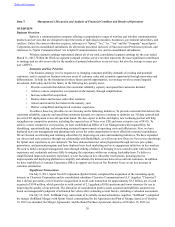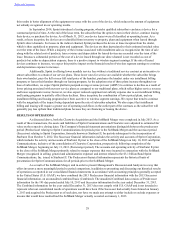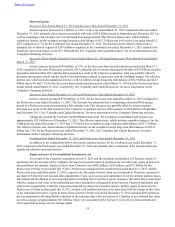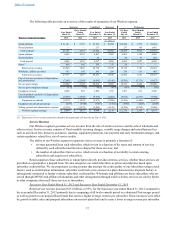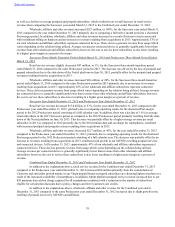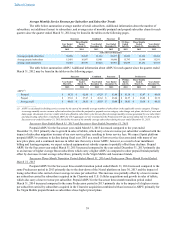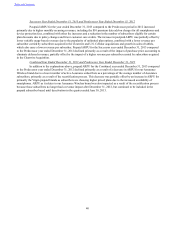Sprint - Nextel 2014 Annual Report Download - page 38
Download and view the complete annual report
Please find page 38 of the 2014 Sprint - Nextel annual report below. You can navigate through the pages in the report by either clicking on the pages listed below, or by using the keyword search tool below to find specific information within the annual report.
Table of Contents
36
Segment Earnings - Wireless
Wireless segment earnings are a function of wireless service revenue, the sale of wireless devices (handsets and
tablets), broadband devices, connected devices and accessories, in addition to costs to acquire subscribers and network and
interconnection costs to serve those subscribers, as well as other Wireless segment operating expenses. The costs to acquire
our subscribers include the net cost at which we sell our devices, referred to as equipment net subsidies, as well as the
marketing and sales costs incurred to attract those subscribers. Network costs primarily represent switch and cell site costs,
backhaul costs, and interconnection costs, which generally consist of per-minute usage fees and roaming fees paid to other
carriers. The remaining costs associated with operating the Wireless segment include the costs to operate our customer care
organization and administrative support. Wireless service revenue, costs to acquire subscribers, and variable network and
interconnection costs fluctuate with the changes in our subscriber base and their related usage, but some cost elements do not
fluctuate in the short term with these changes.
As shown by the table above under "Consolidated Results of Operations," Wireless segment earnings represented
almost all of our total consolidated segment earnings (loss) for the year ended March 31, 2015. The wireless industry is
subject to competition to retain and acquire subscribers of wireless services. Most markets in which we operate have high
rates of penetration for wireless services.
In late 2013, we introduced new service plans, which include device payment through installment billing, that
allow subscribers to forgo traditional service contracts and handset subsidies in exchange for lower monthly service fees,
early upgrade options, or both. As the adoption rates of these plans increase throughout our base of subscribers, we expect
Sprint platform postpaid ARPU to continue to decline as result of lower pricing associated with our new service plans as
compared to our traditional plans, which reflect higher service revenue and lower equipment revenue; however, we also
expect reduced equipment net subsidy expense due to Sprint Easy Pay and leasing programs to partially offset these declines.
Within the Wireless segment, postpaid wireless services represent the most significant contributor to earnings, and is driven
by the number of postpaid subscribers to our services, as well as ARPU. We began to experience net losses of postpaid
handset subscribers in mid-2013. Since the release of our new price plans, results have shown improvement in trends of
handset losses; however, there can be no assurance that this trend will continue. The net loss of postpaid handset subscribers
in the period beginning April 1, 2014 through the year ended March 31, 2015 is expected to cause wireless service revenue to
be approximately $1.2 billion lower for the fiscal year 2015 than it would have been had those subscribers not been lost. The
expected negative impact to service revenue and wireless segment earnings as a result of these subscriber losses is expected
to be partially mitigated by net additions of tablets and connected devices experienced during the same period and increases
in equipment revenue due to subscribers electing to use our installment billing and leasing programs. In addition, we leased
devices through Sprint direct channels totaling approximately $1.2 billion during the year ended March 31, 2015 that would
have increased cost of goods sold if they had been purchased under the installment billing or traditional subsidized programs.
If the trend of handset subscriber net losses continues, we expect to see continued pressure on segment earnings. We have
taken initiatives to provide the best value in wireless service while continuing to enhance our network performance, coverage
and capacity in order to attract and retain valuable handset subscribers. In addition, we are evaluating our cost model to
operationalize a more effective cost structure that better matches our new service plans, which we believe may help to relieve
some of the pressure we expect on earnings.


